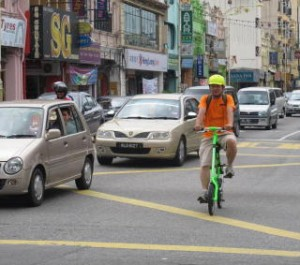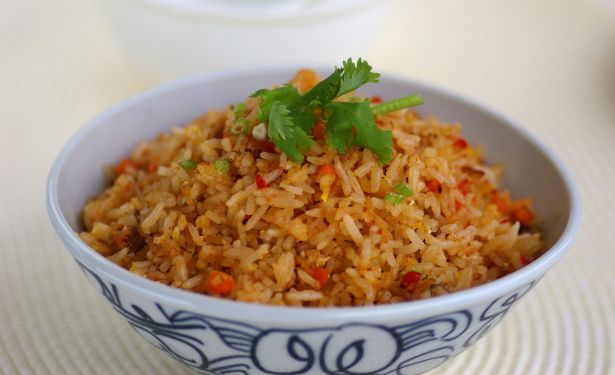HELLO folks! Here’s wishing all you Chinese readers a Gung Hei Fatt Choy.
Just remember to drive safely and take a break whenever you are tired when you hit the road back to your hometowns.
In this edition, I would like to take you on a folding bike makan adventure and address an issue about commuting on a train with a bicycle.
Now, there has been a lot of “hoo-haa” about this issue.
Based on what I know, commuters are not allowed to bring full-sized bicycles onboard a train. If they insist, they will be charged for hauling oversized luggage.
This is apparent on the KTMB intercity and Komuter services. If you roll into a train station with your road or mountain bike and hope to board a commuter train to any stations around the Klang Valley or beyond, you will be barred from doing so by the station master.
From what I know, some cyclists had heated arguments about this and had “demonised” the KTMB people on their blogs and cycling forums on the Internet.
The way I see it, if you are using public transport, it is best to be polite and respect your friendly KTMB station master.
As a folding bike owner, I never had any issues boarding the LRT, Monorail or even the KTMB intercity trains.
So, to investigate this, I embarked on an experiment by traveling by rail from Subang Jaya to Seremban on a Komuter train.
The first thing I did was to carry little folding bike on a bag and travel with Melvin Tang of Strida Bikes Malaysia who thought it was a brilliant idea.
For your information, Tang is a dealer of the Strida brand folding bikes that are ideal for short-distance commutes.
From Subang Jaya, I took the train down to KL Sentral where I had arranged to meet my cycling partner.
There were no issues on boarding the train as the bicycle was carried in a bag.
When I met Tang, he too had his trusty Strida bike stowed in a bicycle bag.
We took about an hour to reach Seremban and proceeded with a 6km ride around town in heavy traffic.
Since we were there, the first order of the day, was to locate Yik Wai wantan mee stall (GPS N 02 42 824, E 101 57 011) that came highly recommended by The Star’s executive editor Datuk Wong Sai Wan.
Earlier, Wong made mention of a wantan mee stall located underneath a tree along Jalan Tuanku Antah.
“Eh Sam ah! You must try this wantan mee. It’s one of the best in town,” said Wong.
Locating this makan place was, in itself, an adventure.
Tang and I had made the wrong turn and ended up cycling out of Seremban.
We corrected our course and finally found the way back to the town area and found the cosy wantan mee stall.
The customers there were dumbfounded when they saw two adults who came into the stall and parked their little folding bicycles there.
Tang’s strange-looking transport became a conversation piece.
I wasted no time in placing an order with the stall owner who told me that he had been in business for nearly four decades.
“Eh Samo, they use chee yau (lard) for the wantan mee la! Very tasty…,” said Tang.
Pricing-wise, I would say that it’s pretty decent.
We had two plates of wantan mee and a bowl of soup with wantan and suey kow (dumplings) which came up to RM13.50.
After a good fill, Tang and I continued to ride around Seremban and checked other makan places there.
We boarded the 3pm KTM Komuter back to Kuala Lumpur and found that if basic courtesy such as bagging the folding bike and giving up your seats for the elderly and disabled is observed, the Komuter experience is definitely worth a try.
But before you decide to jump into the train with your bicycle, be informed that large bikes are not allowed into the train.
The most ideal wheel-size for train commutes are 16” because it’s compact and light.
With the success of the Seremban experiment, I had my mind set for KTM Komuter excursions to Rawang, Sungai Buloh and other parts of the Klang Valley.







